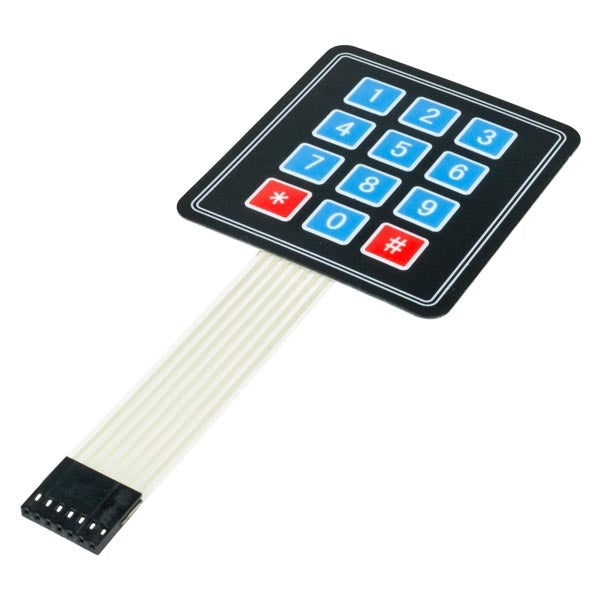Explore the Benefits of Using a Membrane Switch in Modern Devices
Explore the Benefits of Using a Membrane Switch in Modern Devices
Blog Article
Comprehending Membrane Switches: The Key to Resilient and Reputable Controls

What Are Membrane Layer Buttons?
Membrane layer buttons are a sophisticated solution in the world of interface technology, incorporating functionality and layout seamlessly. These gadgets act as an interface in between individuals and digital systems, incorporating numerous parts right into a portable layout. Generally constructed from versatile, thin layers of materials, membrane switches are designed to react to touch, enabling users to interact with machinery and electronic tools properly.
The key components of a membrane layer button include a printed circuit layer, graphic overlay, and a spacer layer that prevents unintended activation. The visuals overlay can be tailored to mirror brand identity or user choices, boosting appearances while making certain use. Membrane layer switches are commonly made use of in numerous applications, including medical tools, customer electronics, and commercial tools, owing to their toughness and resistance to environmental elements such as dampness and dirt.
One of the key benefits of membrane buttons is their capability to endure wear and tear, making them excellent for high-traffic atmospheres. Furthermore, they are lightweight and call for very little space, permitting ingenious designs in item development. In general, membrane layer changes represent a reliable and useful selection for contemporary digital interfaces, weding innovation with user-centric layout principles.
Just How Membrane Switches Over Work
The procedure of membrane switches over rest on a basic yet reliable device that translates individual input into electronic signals. These switches contain several layers, typically including a graphic overlay, a spacer layer, and a circuit layer. When a user presses the switch, the top layer warps, enabling a conductive element in the circuit layer to reach a matching conductive pad on the bottom of the visuals overlay. This contact closes the circuit and sends out a digital signal to the device, showing that the switch has actually been triggered.
The style of membrane layer buttons can vary, yet they often incorporate domes or tactile elements to provide responses to the customer, enhancing the overall experience - membrane switch. The materials used in membrane buttons, such as polyester or polycarbonate, add to their longevity and resistance to environmental aspects, including dampness and dust. Moreover, the published circuits are commonly enveloped, which secures them from wear and tear in time.
Advantages of Membrane Layer Switches

In addition, membrane layer buttons are known for their resilience. Created from durable products, they are resistant to dust, moisture, and physical wear, which significantly extends their life expectancy contrasted to typical mechanical buttons. This resilience makes them specifically ideal for high-traffic settings and applications needing longevity.
An additional considerable advantage is the ease of cleaning and upkeep. The smooth surface area of membrane layer switches over lessens dust build-up and is often unsusceptible spills, making them optimal for setups that require frequent sanitization.
In addition, membrane buttons use a streamlined account, leading to a thinner design that can be integrated right into different devices without adding mass. This attribute not just improves the aesthetic allure however likewise adds to a more ergonomic product design.
Applications of Membrane Buttons
Versatile and easy to use, membrane buttons locate applications throughout a wide variety of industries, including medical tools, customer electronic devices, and industrial tools. In the medical area, these buttons are essential to tools such as analysis equipment, client tracking systems, and mixture pumps, where integrity and ease of cleansing are important. Their capability site link to hold up against severe atmospheres and keep performance makes them excellent for such applications.

In consumer electronics, membrane buttons are utilized in products like microwaves, washing devices, and push-button controls - membrane switch. Their smooth design enables instinctive user interfaces, enhancing the overall individual experience while providing toughness and resistance to tear and use
Commercial devices also profits from membrane layer buttons, especially in control panels for machinery and automation systems. These buttons provide defense against dirt and moisture, making sure constant performance in difficult environments. Additionally, their customizable functions permit manufacturers to tailor them to specific functional needs, enhancing performance and capability.
Choosing the Right Membrane Layer Switch Over
When choosing a membrane switch, it is vital to take into consideration various aspects that affect performance and viability for certain applications. The primary considerations consist of ecological conditions, responsive comments, sturdiness, and style requirements.
First, evaluate the operating setting; buttons subjected to dampness, chemicals, or severe temperature levels require particular materials to make sure durability and capability. Next, evaluate the demand for responsive responses. Depending on individual communication, some applications may take advantage of a tactile action to validate activation, while others may favor a non-tactile design for visual reasons.
Longevity is one more important variable; membrane switches must be made to hold up against constant usage, influences, and abrasion. Guarantee the selected button can endure the expected lifecycle, particularly in high-usage circumstances.

Final Thought
In conclusion, membrane layer switches over offer as vital elements in the style of dependable and long lasting control systems throughout numerous sectors. The versatility of membrane layer switches allows for customized remedies that satisfy certain operational needs, strengthening their importance in contemporary innovation.
Membrane switches represent a crucial facet of modern interface layout, mixing performance with wikipedia reference resilience in different applications.Membrane layer switches are a sophisticated service in the realm of user interface technology, integrating performance and design flawlessly. Normally constructed from versatile, slim layers of materials, membrane switches are created to react to touch, allowing customers to communicate with machinery and digital devices successfully.
The style of membrane switches can vary, but they usually incorporate domes or tactile components to provide comments to the customer, enhancing the overall experience.In final thought, membrane changes offer as essential components in the style of resilient and trusted control systems across different industries.
Report this page